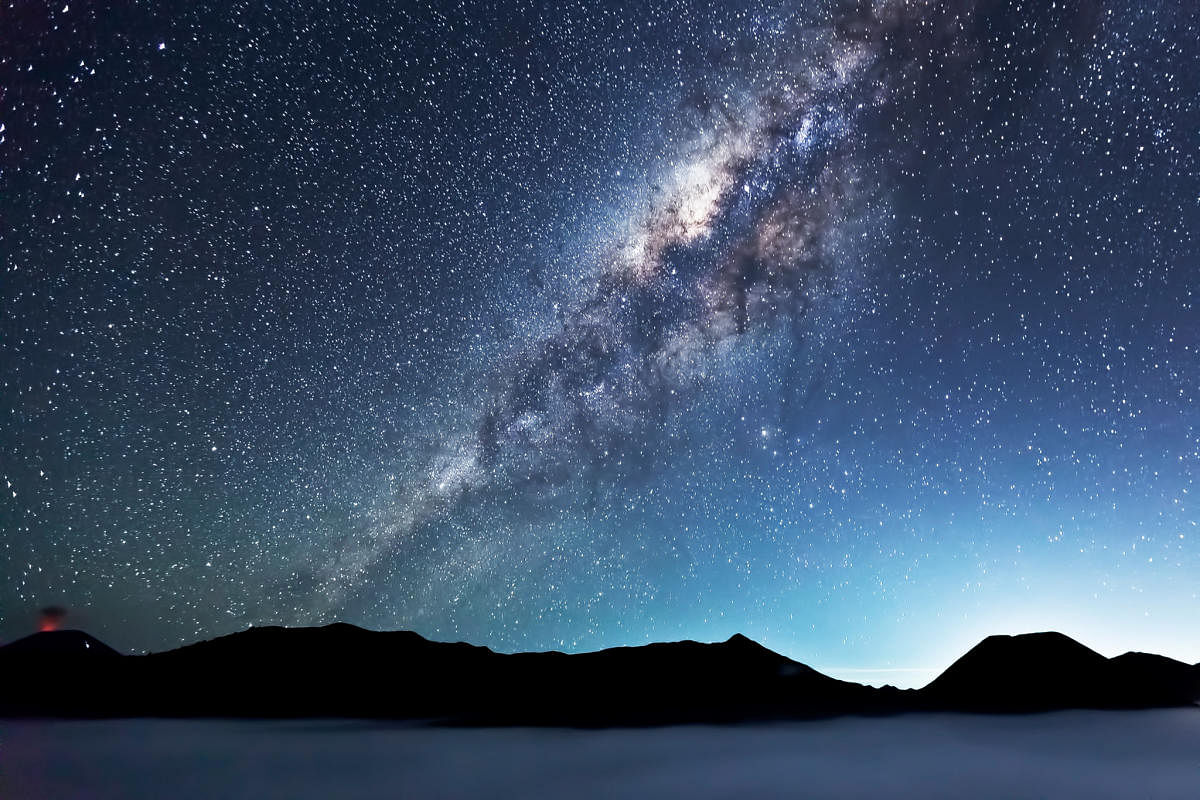Some 900 million years ago, the first multi-cellular organisms came into existence. The next couple of hundred million years saw their gradual evolution into vicious 30-foot-tall lizards, along with the first mammals. Around this time, an event of earth-shattering ramifications was underway on a much larger scale. Two galaxies were on a collision course, our Milky Way being one of them.
There are around 250 billion stars in the Milky Way galaxy, with a fresh crop born regularly. In a state of constant motion, these immense celestials exert a gravitational pull on each other leading to collisions where the larger galaxy usually assimilates the stars of the other.
The separation between different masses is colossal and there is little chance of any catastrophic impact between the stars. The ‘collision’ is more about their spatial acclimatisation to the environs of the main galaxy. These events occur at regular intervals, yet on some occasions, a galaxy ‘escapes’ from the gravitational pull of the other and drifts away. One such escape occurred 900 million years to 300 million years ago.
In September 2018, a team of researchers from the Institute of Cosmos Sciences of the University of Barcelona (ICCUB, UB-IEEC) and the University of Groningen published a study in ‘Nature’ about their use of the European Space Agency’s Gaia spacecraft to analyse around six million stars. The study identified the presence of an influence, external to the galaxy, which had caused some disturbance to the plane of stars here.
Gravitational forces, in these cases, act in different directions on stars and alter their velocities. This results in a trajectory slightly different from the rest of the stars in the galaxy and the stars seemed to be arranged in a unique shell-like shape. That an interaction of this nature happened so close to our own time has left scientists in disbelief.
“In the beginning, the features were very weird to us…It looks like suddenly you have put the right glasses on and you see all the things that were not possible to see before,” says Teresa Antoja of the University of Barcelona, who lead the team. The escapee has now been identified as the Sagittarius galaxy, which is fated to add to the beautiful spirals of the Milky Way as the remnants of a 900-million-year-old fling.
The study has been heralded as a major find of ‘galactic archaeology’ and directs attention to the importance of understanding galactic collisions and their effects on stars as exhibited by the Milky Way-Sagittarius interaction. It holds even more significance since the next big collision expected is with the Andromeda galaxy. That’s a bit in the future — some four billion years hence.
Blackholes and stars
One only needs to think how the slow waltz of these giants across space and time in comparison to the diminutive scale of everyday traffic or that festering pimple on one’s face. This beautiful and awe-inspiring phenomenon of galactic collisions also leaves us t think about the presence of one of the most mysterious cosmic objects known to mankind — the blackhole.
Every galaxy has a super-massive blackhole at its centre, continually feeding off the matter around it. The collision of two different galaxies sees their blackholes exert tremendous amounts of pressure on each other. Blackholes play an important role in creating stars as well, due in part to the intermittent luminosity exhibited by them.
Normally, they emit high energy radiation, which keeps the highly pressurised gases from condensing into stars. However, when the radiation emitted decreases, the gases condense and quench to form stars en masse. The bigger the blackhole, the faster the stars form.
Dear Moon
It seems a shame that the cosmos hasn’t been observed through the eyes of a poet, for if a simple daffodil could act to elicit the heartfelt appreciation William Wordsworth had for nature, a poem about these immense titans of the universe would be a precious read.
It is, therefore, a small step for mankind that SpaceX plans to send six to eight artistes to space, aboard their Big Falcon Rocket (BFR) in 2023. The ‘Dear Moon’ project is being backed by Japanese billionaire Yusaku Maezawa and works of art are expected from the crew, which comprises a director, a painter, a musician, a dancer and a fashion designer.
At this very moment, a million stars are taking birth, surrounded by vast multicoloured gas clouds and a forbidding blackhole, which could potentially be visible through the naked eye in the future. Space travel is one of the biggest endeavours of the human race and also one of the most rewarding. The end-result could be a new space colony, minerals or even just a poem, for if one can be sparked to creativity by a speck of dust, how much more enchanting would the entire universe be!
(The writer is a mechanical engineer and science enthusiast)
